
Roots
The story of textured hair, often whispered in hushed tones or celebrated in vibrant bursts, is one deeply intertwined with the broader currents of human experience. It is a story of adaptation, of resilience, and, regrettably, of the burdens placed upon it by societal perceptions. To truly grasp how external beauty standards impose a weight upon textured hair, one must first look beneath the surface, to the very core of what makes these strands unique. Our understanding begins with the hair itself, its inherent qualities, and the precise language we use to speak of it.
The biological reality of textured hair stands in stark contrast to the often-singular ideal promoted by dominant beauty narratives. Each strand, from its birth within the scalp to its full expression, possesses characteristics that set it apart. These distinctions are not arbitrary; they are the result of evolutionary pathways and genetic blueprints, each contributing to the hair’s distinct form and behavior.

Hair Anatomy and Physiology Specific to Textured Hair
Delving into the microscopic world of a single hair reveals a sophisticated structure. At its heart, every hair shaft comprises three primary layers ❉ the cuticle, the cortex, and the medulla. The outermost layer, the Cuticle, consists of overlapping scales, much like shingles on a roof. In textured hair, these scales tend to be more lifted, contributing to a naturally higher porosity.
This characteristic influences how hair absorbs and retains moisture, a fundamental aspect of its care. Beneath the cuticle lies the Cortex, the thickest layer, providing strength and elasticity. This is where melanin, the pigment determining hair color, resides. The innermost core, the Medulla, is often absent in finer hair types but plays a role in the overall structure.
The shape of the hair follicle itself is a primary determinant of curl pattern. Straight hair emerges from a round follicle, while wavy hair grows from an oval follicle. Textured hair, with its coils and kinks, springs from an elliptical or even flat, ribbon-like follicle.
This varied follicle shape causes the hair shaft to grow in a helical, or spiral, manner, leading to its characteristic curl. This spiraling path means that textured hair often has more points of curvature along its length, making it inherently more prone to breakage if not handled with care.
Understanding the biological blueprint of textured hair is the first step toward appreciating its inherent strength and beauty, apart from imposed societal ideals.
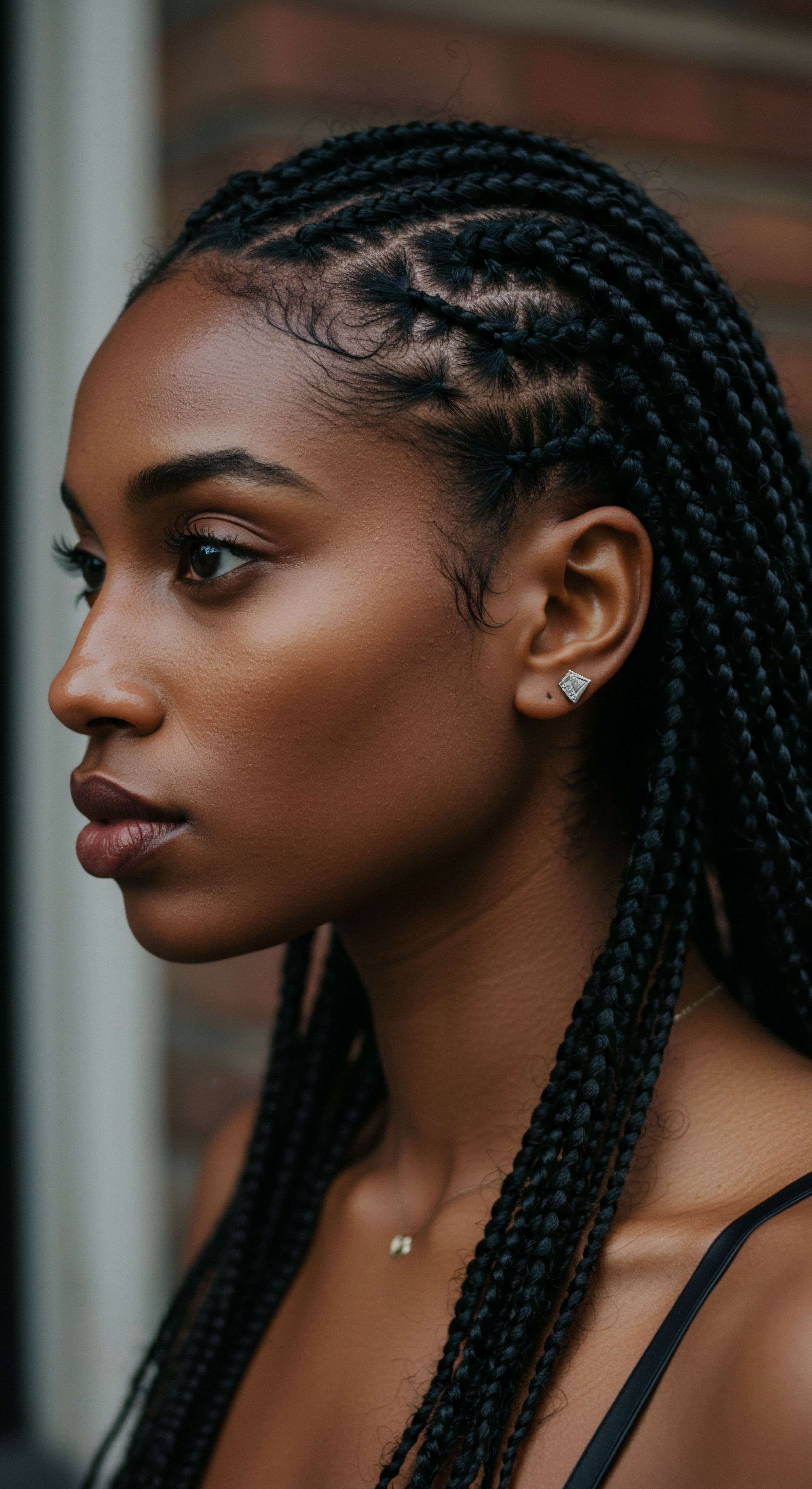
Textured Hair Classification Systems
For many years, the beauty industry struggled to categorize textured hair in a meaningful way, often resorting to broad, unhelpful labels. The emergence of classification systems, while not without their critics, has provided a more granular vocabulary. The most widely recognized system, often attributed to Andre Walker, categorizes hair into types 1 through 4, with sub-classifications for varying degrees of wave, curl, and coil.
- Type 1 ❉ Generally straight hair.
- Type 2 ❉ Wavy hair, ranging from loose waves (2A) to more defined S-patterns (2C).
- Type 3 ❉ Curly hair, with distinct curls that can be loose (3A), springy (3B), or tightly curled (3C).
- Type 4 ❉ Coily or kinky hair, characterized by tight, often Z-pattern coils that can be fine (4A), densely packed (4B), or very tightly coiled (4C).
While these systems offer a useful starting point for understanding hair patterns, it is important to remember that hair rarely fits neatly into a single category. Many individuals possess multiple curl patterns on their head, a unique blend that speaks to the diversity within textured hair. This diversity underscores the inadequacy of singular beauty standards that fail to recognize the spectrum of natural forms.

The Essential Lexicon of Textured Hair
A precise vocabulary helps us navigate the nuances of textured hair care and dialogue. Terms like Porosity, which refers to the hair’s ability to absorb and retain moisture, are central to understanding product efficacy. Hair with high porosity has a more open cuticle, absorbing water quickly but also losing it rapidly. Low porosity hair, with its tightly closed cuticle, resists moisture but holds onto it once absorbed.
Another important concept is Elasticity, the hair’s capacity to stretch and return to its original state without breaking. Healthy hair possesses good elasticity, a sign of strong internal bonds. Shrinkage, a characteristic often observed in tightly coiled hair, refers to the apparent reduction in length as hair dries and its natural curl pattern contracts.
While sometimes perceived as a challenge, shrinkage is a sign of healthy, resilient hair. Understanding these terms allows for a more informed and less frustrated approach to care, moving away from a mindset that views natural hair characteristics as flaws.

Hair Growth Cycles and Influencing Factors
Hair growth follows a cyclical pattern, consisting of three main phases:
- Anagen Phase ❉ This is the active growth phase, which can last from two to seven years. During this time, hair cells divide rapidly, leading to hair lengthening.
- Catagen Phase ❉ A transitional phase lasting about two to three weeks, where hair growth stops and the hair follicle shrinks.
- Telogen Phase ❉ The resting phase, lasting around two to four months, after which the hair sheds and new hair begins to grow from the same follicle.
Several factors influence these cycles, including genetics, nutrition, hormonal balance, and overall health. Stress, both physical and psychological, can disrupt these cycles, leading to increased shedding or slower growth. The societal pressures associated with conforming to narrow beauty standards can introduce a chronic layer of psychological stress, potentially impacting the very rhythm of hair growth and renewal. This connection between external pressure and internal biological processes underscores the depth of the stress experienced by individuals with textured hair.

Ritual
Stepping from the foundational understanding of textured hair, we now turn our gaze to the daily and periodic practices that shape its existence. The realm of hair care, often a deeply personal and intimate experience, transforms into a series of rituals. These practices, whether inherited through generations or discovered through personal exploration, reflect a continuous dialogue between our hair’s inherent needs and the often-unspoken demands of cultural beauty standards. This section offers a gentle guide through the practical wisdom that can bring serenity to textured strands, even amidst the clamor of external expectations.
The pursuit of specific looks, often dictated by dominant beauty narratives, has historically led to practices that compromise the health and vitality of textured hair. However, a conscious shift toward practices that honor the hair’s natural inclinations can transform these rituals into acts of self-care and affirmation.

Protective Styling Encyclopedia
Protective styles serve as a shield, safeguarding delicate textured strands from environmental aggressors and excessive manipulation. They offer a respite, allowing hair to retain moisture and length. The concept extends beyond mere aesthetics, encompassing a deeper purpose of preservation.
Some popular protective styles include:
- Braids ❉ Whether cornrows, box braids, or plaits, braids keep hair neatly tucked away, reducing tangling and breakage. The technique involves dividing hair into sections and interweaving three or more strands.
- Twists ❉ Two-strand twists or flat twists offer a gentler alternative to braids, often resulting in softer, more defined curl patterns upon release. This method typically involves wrapping two sections of hair around each other.
- Buns and Updos ❉ Simple yet effective, these styles keep hair off the shoulders and neck, minimizing friction and exposure to elements. A well-executed bun can protect ends, which are the oldest and most fragile parts of the hair.
- Wigs and Weaves ❉ These provide a versatile option for complete hair protection, allowing natural hair to rest underneath. Proper installation and maintenance are paramount to avoid tension and scalp issues.
The efficacy of protective styles hinges on proper execution. Avoiding excessive tension at the scalp, ensuring adequate moisture beforehand, and not leaving styles in for too long are all vital considerations. A well-chosen protective style can be a powerful tool for hair health, allowing individuals to maintain length and reduce the physical stress on their strands, while still navigating various social settings.
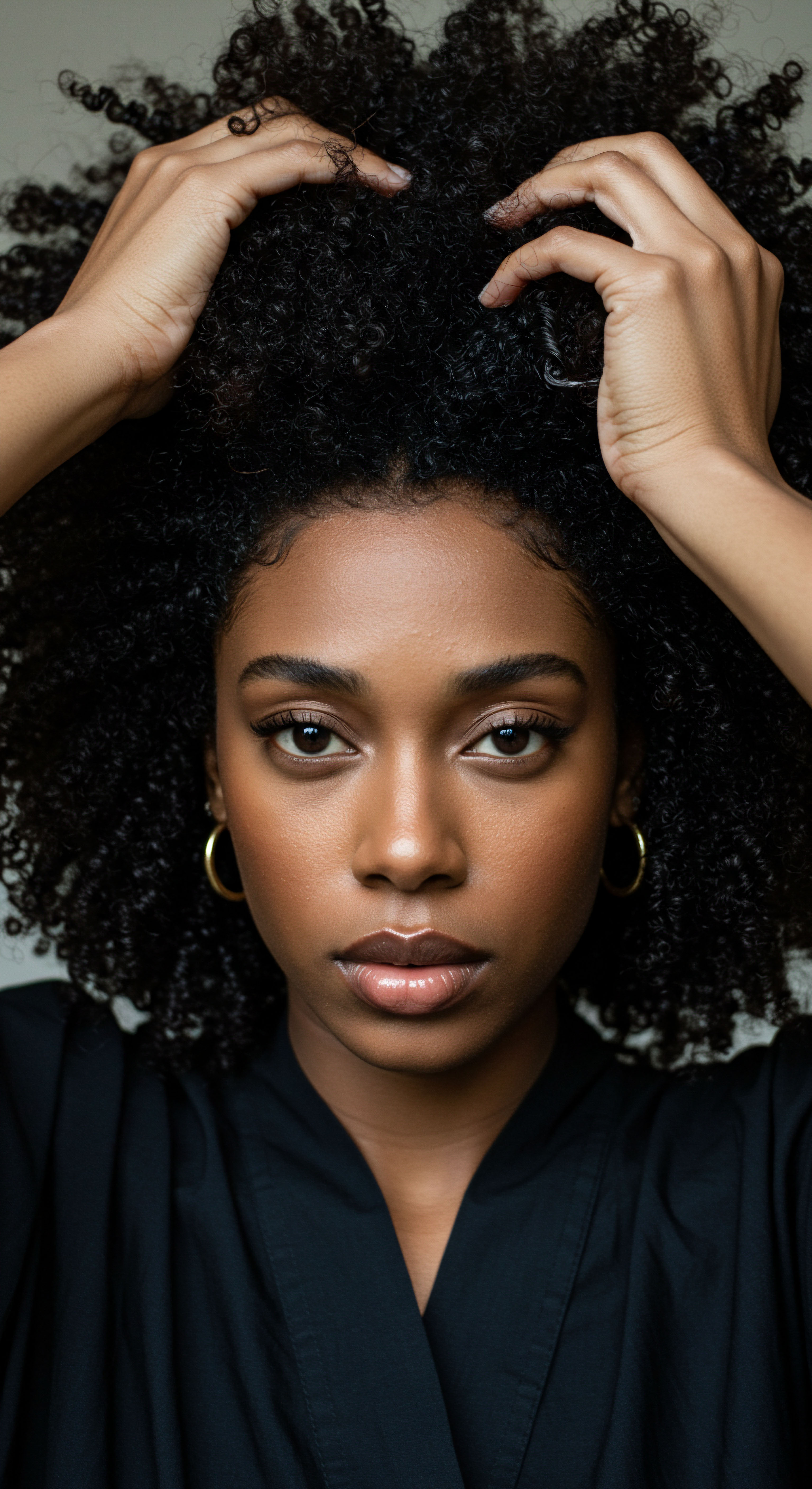
Natural Styling and Definition Techniques
Celebrating the natural texture of hair involves techniques that enhance its inherent curl, wave, or coil pattern without altering its fundamental structure. This approach moves away from methods that seek to impose a different texture, instead focusing on bringing out the best in what is naturally present.
Techniques for defining natural hair include:
- Wash and Go ❉ This method involves cleansing, conditioning, and applying styling products to wet hair, allowing it to air dry or diffuse to reveal its natural pattern. Product choice is key here, focusing on humectants and emollients to draw in and seal moisture.
- Twist-Outs and Braid-Outs ❉ These techniques involve twisting or braiding damp hair and allowing it to dry before unraveling, creating stretched, defined waves or curls. The size of the twists or braids influences the resulting definition and volume.
- Rod Sets ❉ Using perm rods or flexi-rods on damp hair creates uniform curls, offering a temporary alteration that does not involve heat or chemical processing. The hair is wrapped around the rods and allowed to dry completely before removal.
Each technique requires a nuanced understanding of product layering and application, ensuring the hair remains hydrated and free from product build-up. The beauty in these styles lies in their celebration of individuality, allowing for a spectrum of textures to shine.
Intentional care practices, whether through protective styles or natural definition, offer a gentle rebellion against narrow beauty mandates, allowing hair to thrive in its authentic form.

Wigs and Hair Extensions Mastery
Wigs and hair extensions, while offering transformative styling options, also serve as significant protective tools. Their proper selection, installation, and maintenance are paramount to ensuring the health of the underlying natural hair.
When considering wigs, factors such as cap construction (lace front, full lace, or machine-made), hair type (human or synthetic), and density play a role in both appearance and comfort. For extensions, the method of attachment—be it sew-ins, clip-ins, tape-ins, or micro-links—requires careful consideration to avoid excessive tension on the scalp and hair follicles.
The mastery of these accessories extends beyond the initial application. Regular cleansing of the natural hair underneath, moisturizing the scalp, and giving the scalp periods of rest between installations are vital for preventing traction alopecia and other forms of stress-induced hair loss. Wigs and extensions, when used judiciously, provide a canvas for varied expression without subjecting natural hair to constant manipulation or chemical alteration, offering a practical pathway to meeting societal expectations while safeguarding one’s natural strands.

Heat Styling and Thermal Reconditioning
The use of heat to straighten or alter textured hair has a long and complex history, often tied to societal pressures to conform to Eurocentric ideals. While thermal reconditioning can offer temporary straightness, it carries inherent risks to the hair’s structural integrity.
A safety-first approach to heat styling involves:
- Temperature Control ❉ Using the lowest effective heat setting is crucial. High temperatures can cause irreversible damage to the hair’s protein structure, leading to dryness, breakage, and loss of curl pattern.
- Heat Protectants ❉ These products form a barrier between the hair and the heat, minimizing direct thermal impact. They often contain silicones or polymers that can withstand high temperatures.
- Limited Frequency ❉ Reducing the frequency of heat application allows hair to recover and reduces cumulative damage. Chemical straightening, such as relaxers, permanently alters the hair’s disulfide bonds, making it more vulnerable to breakage and damage.
Understanding the science behind heat’s impact on hair, particularly the breaking of hydrogen and disulfide bonds that define curl, empowers individuals to make informed choices. The goal is to achieve desired styles while preserving the long-term health of the hair, rather than sacrificing its vitality for fleeting conformity.

The Complete Textured Hair Toolkit
The right tools are as significant as the right techniques in nurturing textured hair. A thoughtfully curated toolkit can make a world of difference in reducing physical stress and improving manageability.
| Tool Category Cleansing & Detangling |
| Specific Items Wide-tooth comb, detangling brush, scalp massager |
| Purpose Gentle detangling, distributing product, stimulating scalp circulation. |
| Tool Category Styling & Definition |
| Specific Items Spray bottle, sectioning clips, satin scrunchies, perm rods/flexi-rods |
| Purpose Moisture application, organizing hair, preventing snags, creating temporary curls. |
| Tool Category Protection & Maintenance |
| Specific Items Satin or silk bonnet/scarf, satin pillowcase |
| Purpose Minimizing friction, preserving moisture, maintaining styles overnight. |
| Tool Category Selecting tools designed specifically for textured hair minimizes breakage and supports healthy hair practices. |
Investing in high-quality tools designed for textured hair, such as seamless wide-tooth combs or brushes with flexible bristles, can significantly reduce mechanical stress during styling and detangling. The careful selection of these implements is a practical step towards minimizing physical harm, thereby alleviating a common source of hair stress.

Relay
The journey into textured hair stress finds its most complex and often poignant expression in the interplay of cultural mandates, societal structures, and personal well-being. Here, the threads of science, history, and lived experience intertwine, revealing a landscape where beauty standards are not merely aesthetic preferences but powerful determinants of psychological and social health. This section seeks to unravel these deeper connections, drawing upon research and real-world data to illuminate the profound impact of external pressures on the internal world of individuals with textured hair.
The stress experienced by those with textured hair extends far beyond the physical manipulation of strands; it reaches into the very core of identity and self-perception. This stress is often a direct consequence of a dominant beauty ideal that historically marginalizes and devalues hair that does not conform to a narrow, often Eurocentric, standard.
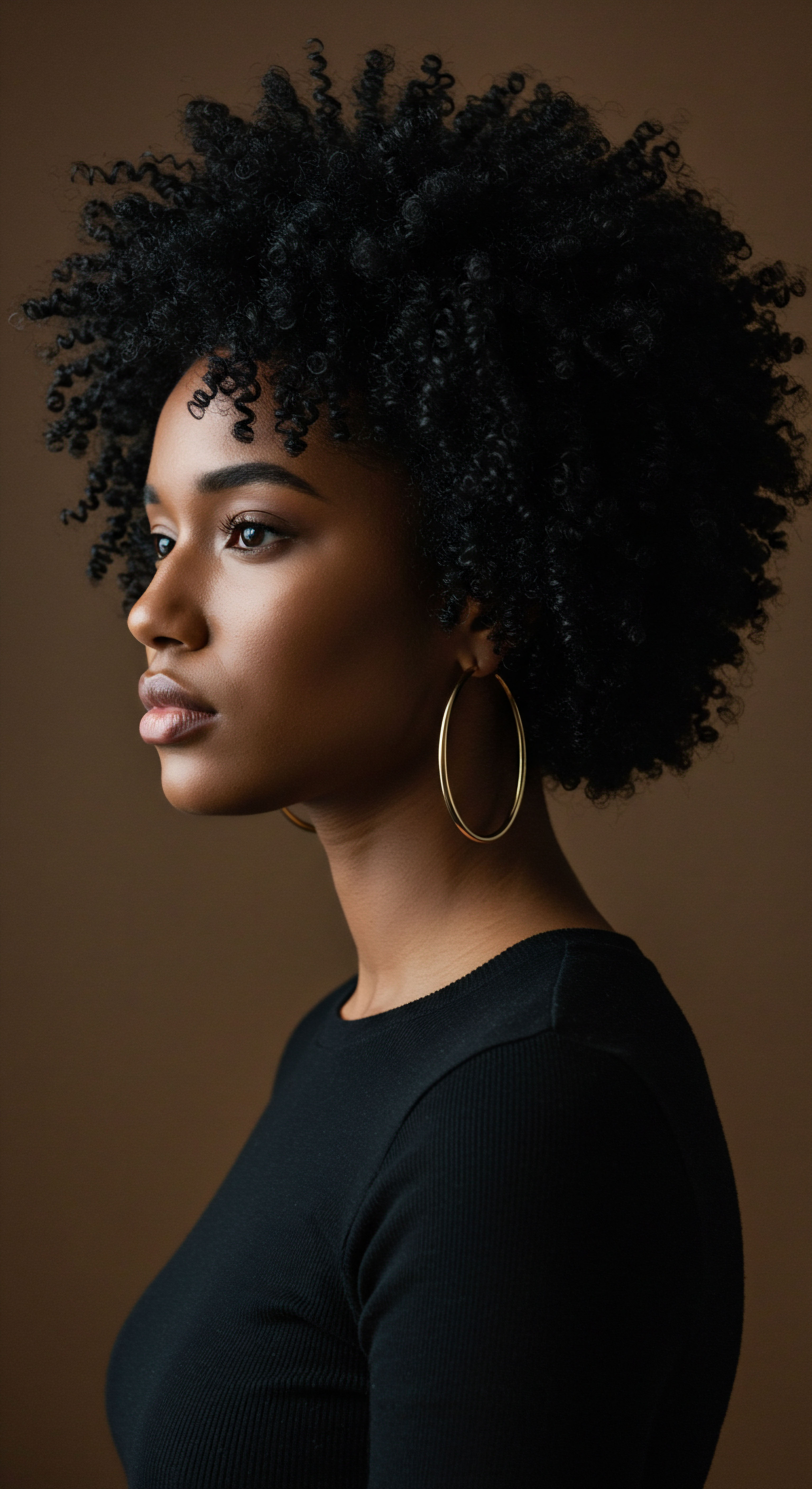
What Psychological Toll Do Narrow Beauty Ideals Exact?
The constant exposure to a singular beauty ideal, one that rarely mirrors the diversity of textured hair, can sow seeds of doubt and inadequacy. This relentless external messaging can lead to a phenomenon known as Internalized Racism, where individuals from marginalized groups begin to adopt the negative stereotypes and aesthetics of the dominant culture as their own. For textured hair, this manifests as a preference for straightened hair, or a belief that natural coils and kinks are inherently “unprofessional” or “unruly.”
Research has begun to quantify this psychological burden. A cross-sectional study examining Black, White, and Latina girls in grades 9 through 11 revealed that Hair was the Sole Area of Physical Appearance Satisfaction Where Differences Emerged along Racial Lines. Black adolescent girls, significantly more than their White and Latina peers, reported experiencing hair-related discrimination and dissatisfaction, which correlated with increased feelings of depression.
This points to a pervasive societal issue where a fundamental aspect of identity becomes a source of emotional distress and even clinical symptoms. The pressure to conform, often through chemical or heat-based alterations, can lead to chronic stress, anxiety, and diminished self-esteem.
The societal insistence on a singular beauty standard imposes a profound psychological burden, manifesting as self-doubt and increased depressive symptoms for those with textured hair.

How Does Media Representation Shape Textured Hair Perceptions?
Media, as a powerful mirror and shaper of culture, plays a significant role in perpetuating or challenging beauty norms. Historically, the media landscape has been overwhelmingly dominated by representations of straight or loosely wavy hair, often relegating textured hair to caricatures or absenting it altogether. This lack of positive, diverse representation sends a clear, albeit unspoken, message about what is considered beautiful, acceptable, or professional.
When textured hair appears, it is frequently portrayed in a way that aligns with Eurocentric ideals, often straightened or presented as an “alternative” style. This perpetuates the idea that textured hair requires alteration to be deemed presentable. The consequences extend to internalized biases within communities themselves, where the desire for “good hair” (often equated with straighter textures) can lead to social hierarchies and self-policing.
However, there is a growing counter-movement. The rise of natural hair influencers and more diverse media portrayals is slowly shifting the narrative, offering a much-needed visual affirmation for textured hair. This visibility is crucial for fostering self-acceptance and dismantling long-held biases.
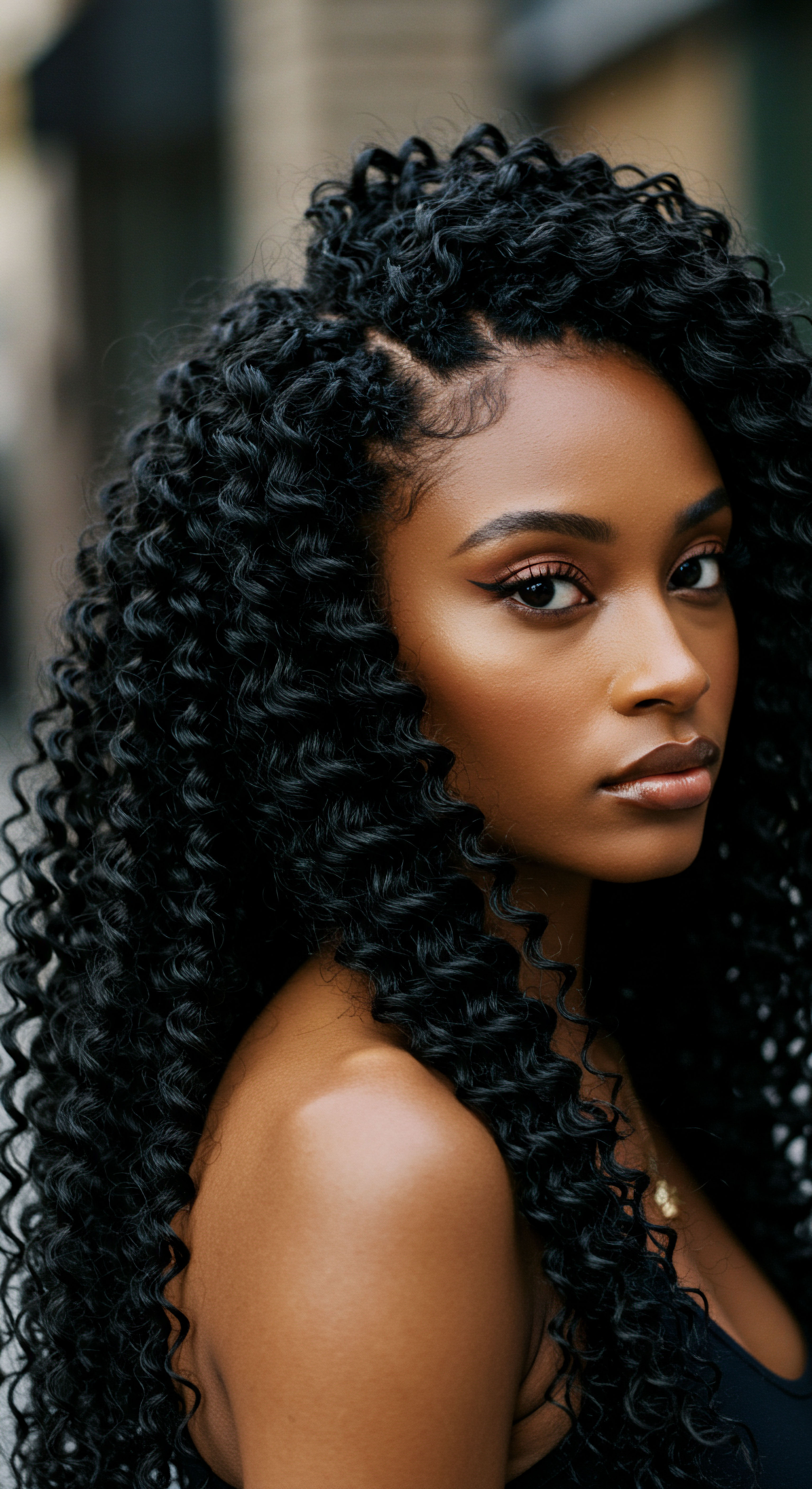
The Systemic Nature of Hair Discrimination
The stress on textured hair is not merely individual; it is deeply rooted in systemic discrimination. Policies in schools and workplaces have historically imposed strict grooming codes that disproportionately penalize natural Black hairstyles, deeming them “unprofessional” or “distracting.” This creates an environment where individuals are compelled to chemically or thermally alter their hair to avoid disciplinary action, job loss, or social exclusion.
The CROWN Act (Creating a Respectful and Open World for Natural Hair), first enacted in California in 2019 and gaining momentum across the United States, directly addresses this systemic issue. This legislation prohibits discrimination based on hair texture and protective hairstyles associated with race. Its existence is a testament to the widespread nature of hair discrimination and the tangible harm it inflicts. The CROWN Act aims to alleviate the professional and educational barriers faced by individuals with textured hair, allowing them to wear their hair authentically without fear of reprisal.
Consider the findings from a 2023 CROWN Workplace Research Study, which highlighted that Black Women Were 54% More Likely to Feel They must Wear Their Hair Straight to Be Successful in a Job Interview. This stark statistic illustrates the tangible pressure to conform and the economic implications of maintaining a hairstyle deemed “acceptable” by a biased standard. The psychological toll of this pressure is immense, as individuals navigate professional spaces with the added burden of managing perceptions related to their natural appearance. This data underscores the critical need for continued advocacy and legislative action to dismantle discriminatory practices.

The Physical Manifestations of Hair Stress
Beyond the psychological burden, the pursuit of conformity can lead to direct physical harm to textured hair. Chemical relaxers, used to permanently straighten coils, can cause significant damage to the hair shaft and scalp, leading to breakage, thinning, and even chemical burns. The repetitive application of high heat, without proper protection, can also alter the hair’s protein structure, resulting in heat damage and loss of natural curl.
The very act of trying to manipulate textured hair into forms that defy its natural structure can lead to mechanical stress. Constant pulling, tight styling, and improper detangling can result in traction alopecia, a form of hair loss caused by prolonged tension on the hair follicles. The intersection of cultural pressure and physical practices creates a cycle of damage and stress that impacts both the health of the hair and the well-being of the individual.

Reflection
As we step back from this exploration, a clearer picture emerges ❉ the relationship between cultural beauty standards and textured hair stress is not a simple line of cause and effect, but a deeply interwoven fabric of history, science, societal expectation, and personal experience. The gentle whisper of a curl, the bold statement of a coil, each carries with it the weight of generations of perception, judgment, and, thankfully, increasing celebration.
For Roothea, our hope lies in fostering a space where knowledge becomes a form of liberation. When we understand the biological intricacies of textured hair, the historical roots of its marginalization, and the profound psychological impact of external pressures, we gain the power to reshape our narratives. This understanding allows us to move beyond the superficial, recognizing that true beauty resides not in conformity, but in the vibrant, authentic expression of self. It calls upon us to listen to our hair, to honor its needs, and to find serenity in its natural rhythms, thereby creating a world where every strand can thrive, unburdened and truly free.
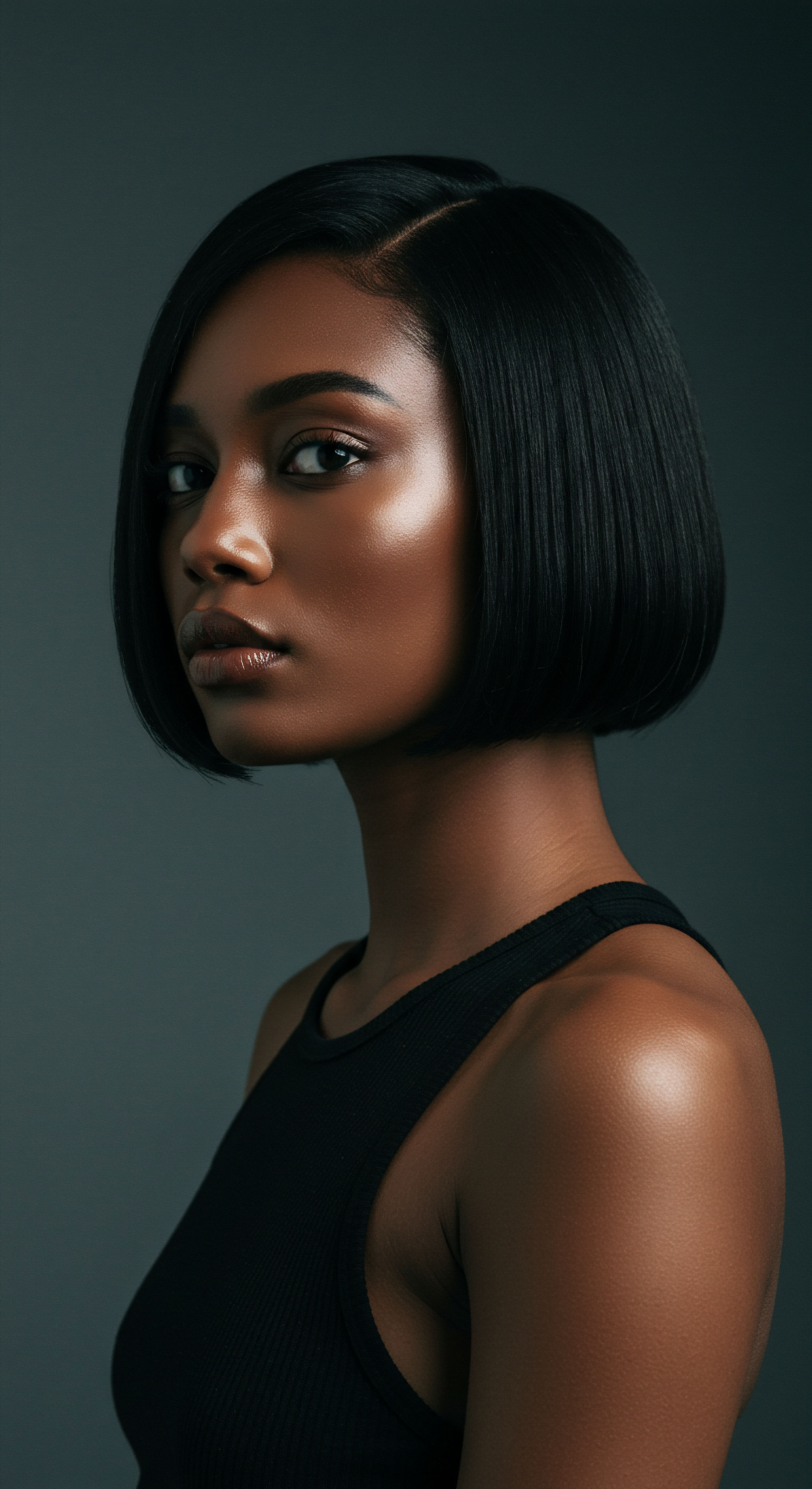
References
- Dabiri, Emma. Twisted ❉ The Tangled History of Black Hair Culture. Harper Perennial, 2020.
- Davis-Sivasothy, Audrey. The Science of Black Hair ❉ A Comprehensive Guide to Textured Hair Care, Special Edition. Sivasothy Publishing, 2011.
- Mbilishaka, Afiya M. “Don’t Get It Twisted ❉ Untangling the Psychology of Hair Discrimination Within Black Communities.” American Journal of Orthopsychiatry, 2024.
- Nkimbeng, Manka, et al. “The Person Beneath the Hair ❉ Hair Discrimination, Health, and Well-Being.” Health Equity, 2025.
- Lisse, Adenique. “UConn Researcher Sheds New Light on Importance of Hair Satisfaction for Black Adolescent Girls.” Body Image, 2025.
- Perez, Marisol, et al. “Study ❉ Black girls commonly have negative experiences related to their natural hair.” Body Image, 2022.
- Robbins, Clarence R. Chemical and Physical Behavior of Human Hair. Springer, 2002.
- Kuipers, Giselinde. “View of Beauty ❉ Triggering the Sociological Imagination with a Webcomic.” Sociologica, 2021.
- Thompson, John B. Ideology and Modern Culture. Polity Press, 2000.